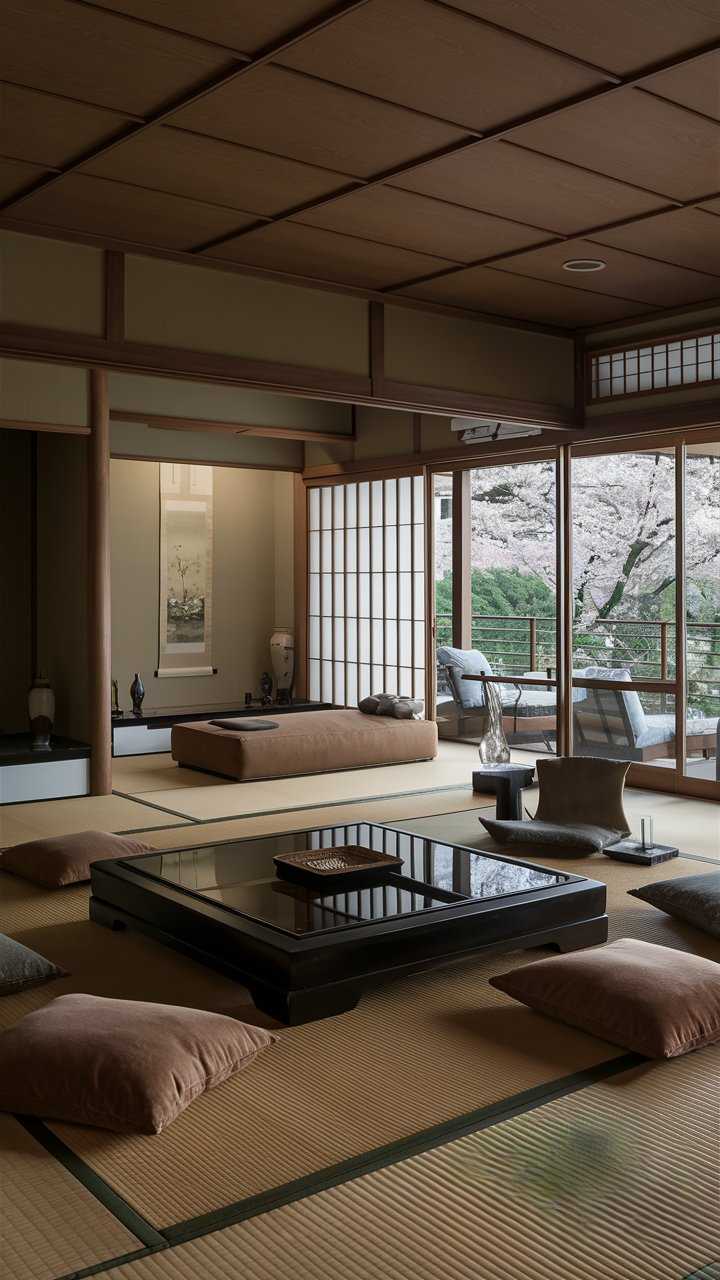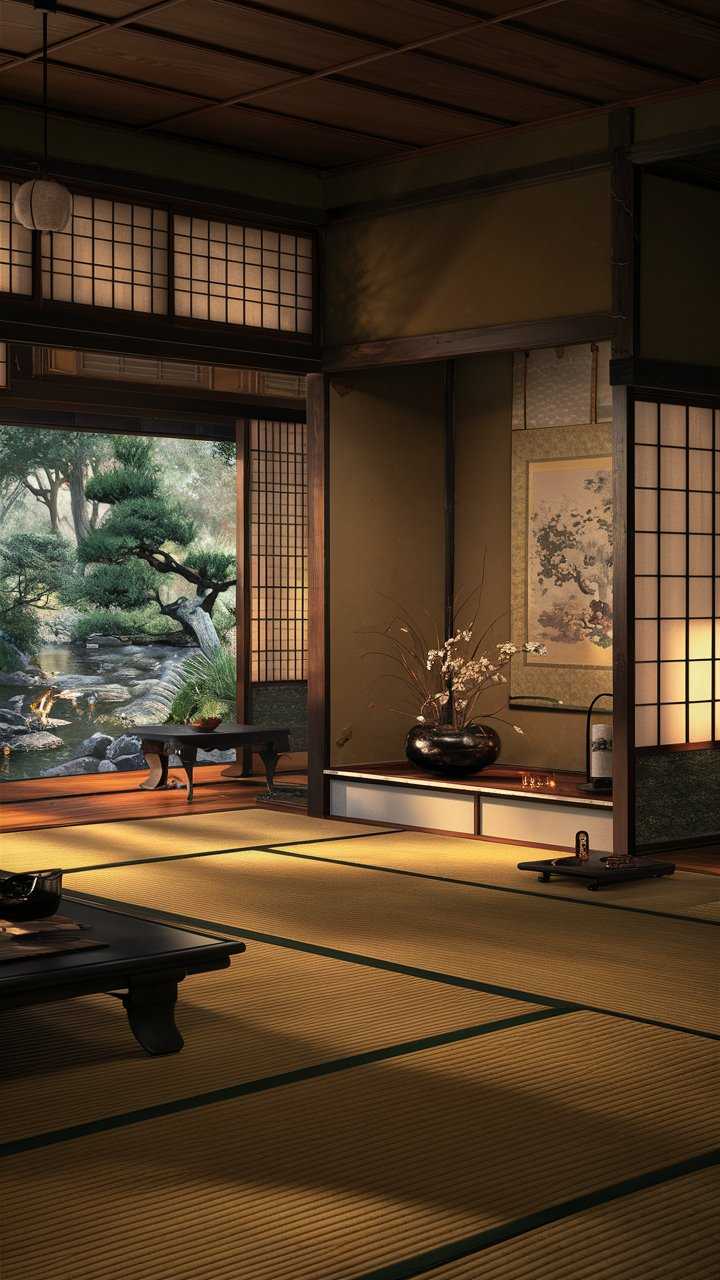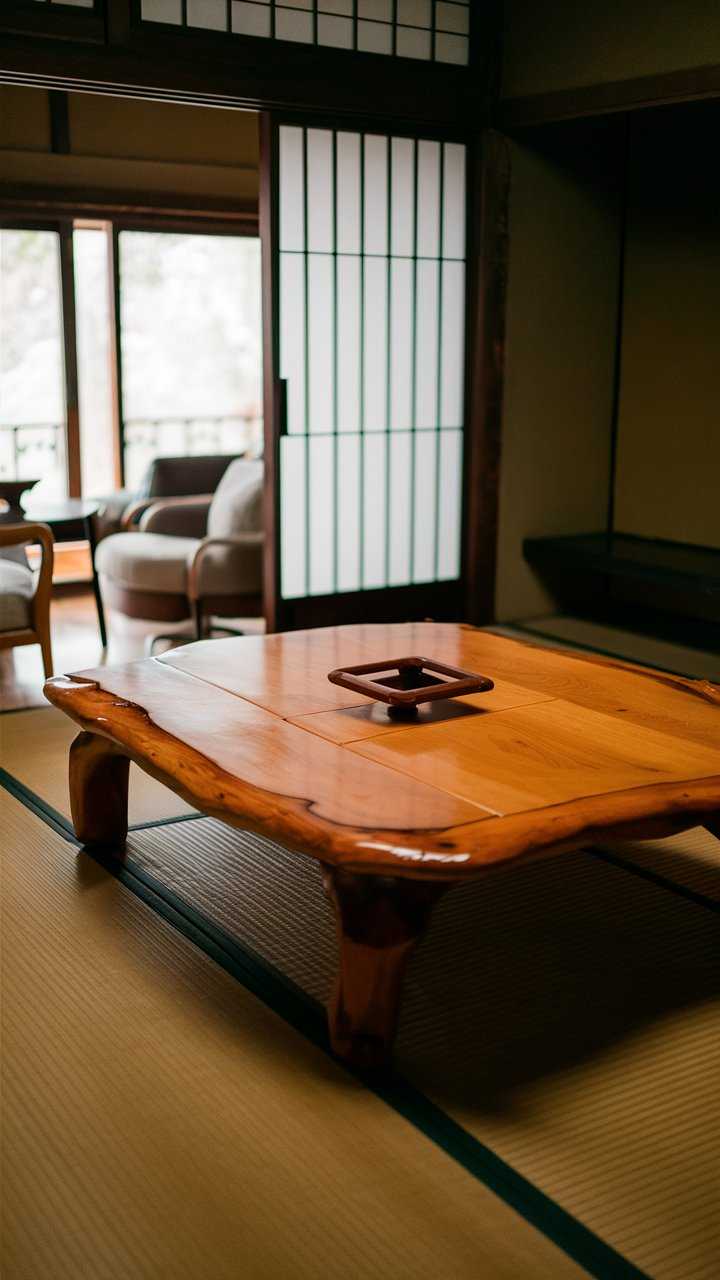Stylish Japanese Living Room Furniture for Your Home
Japanese living room furniture is all about elegance and simplicity. It creates a peaceful space that brings calm and balance. The minimalist style of Japan combines function with beauty, making it perfect for anyone wanting to refresh their living area.
This article explores the various styles, materials, and ideas behind Asian style furniture. It aims to inspire homeowners to add elegance and cultural depth to their homes.
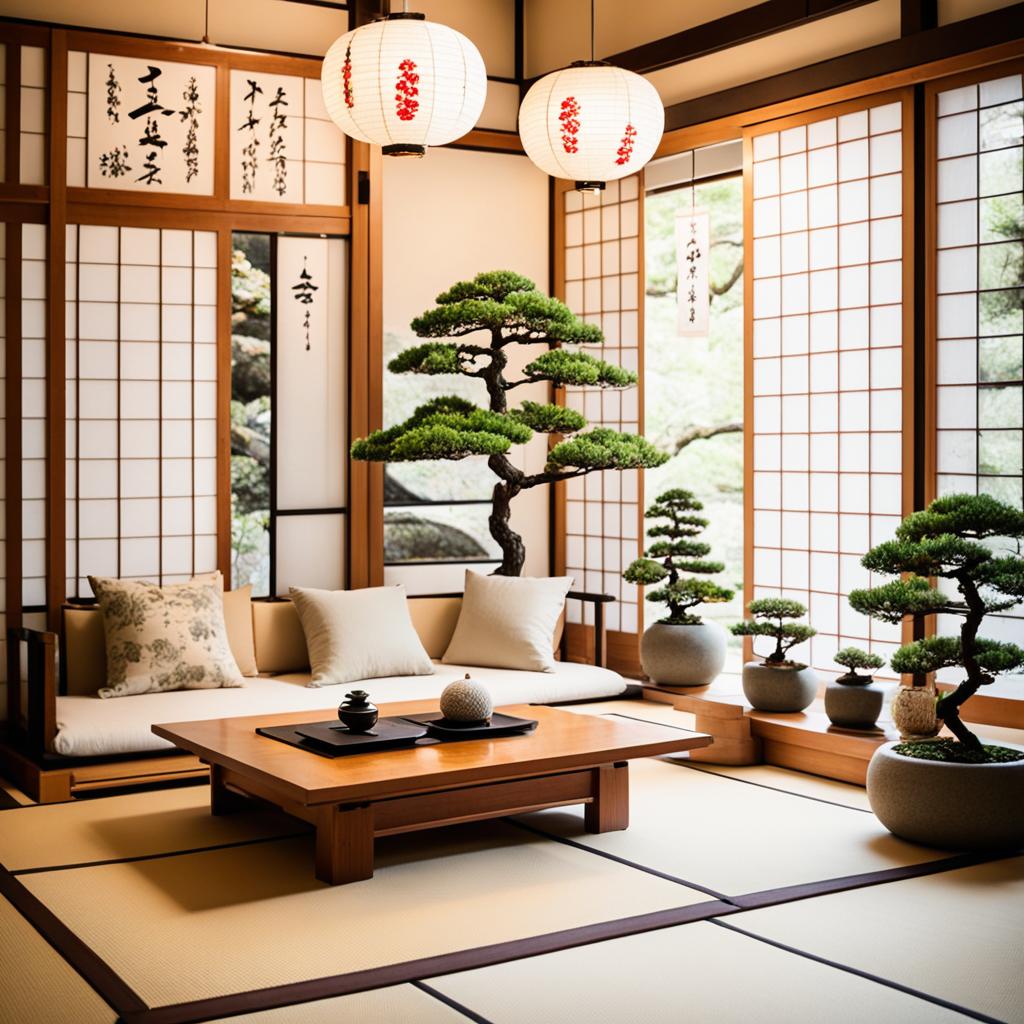
Key Takeaways
- Japanese living room furniture enhances tranquility and elegance.
- Minimalist Japanese interiors promote a sense of calm and space.
- The blend of traditional and modern designs offers versatility.
- Natural materials are commonly used in Asian style furniture.
- The designs reflect deep cultural significance and authenticity.
- Incorporating these elements can rejuvenate contemporary homes.
Understanding Japanese Home Decor
Japanese home decor is all about simplicity and elegance. It shows a love for nature and clean lines. The key idea is minimalist design, which means a tidy space that brings peace.
Essence of Minimalism and Tranquility
Minimalism in Japanese decor means picking furniture and layouts with care. Each item adds beauty and function, making the space better. This way, the room feels calm and perfect for relaxing.
Furniture is arranged to keep the space open. This lets light move around, making the room feel peaceful.
Natural Materials and Earth Tones
Natural materials like wood, bamboo, and stone are key in Japanese decor. They connect the inside with the outdoors, adding warmth and a sense of calm. Colors like beige, brown, and green match these materials well, bringing nature inside.
Using these elements creates a peaceful space. It also supports eco-friendly living, making it a great choice for today’s homes.
Importance of Balance and Harmony in Japanese Design
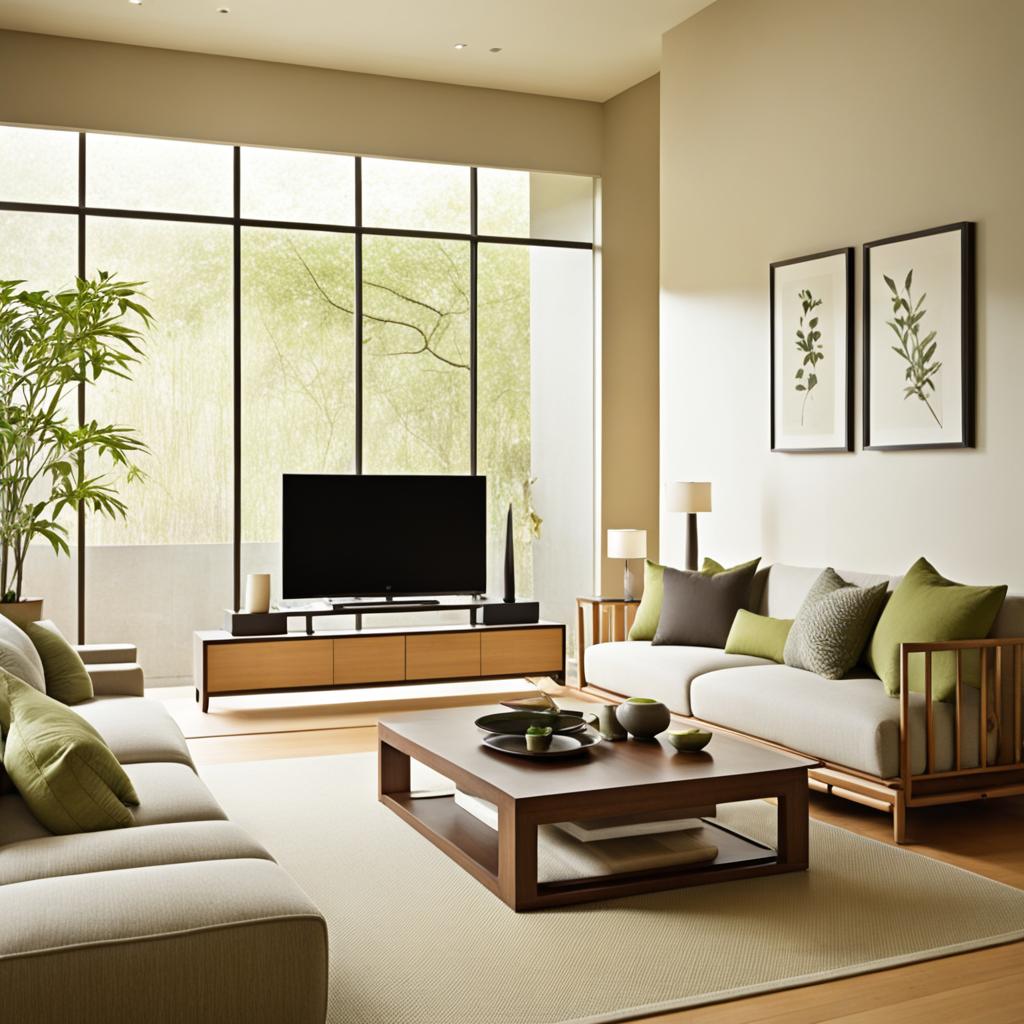
In Japanese design, balance and harmony are key to making spaces peaceful. This approach focuses on creating a calm setting that helps our mental health. By arranging things in a zen living room with care, we make spaces that bring peace and rest.
Creating a Serene Atmosphere
To make a space serene, we choose furniture, colors, and decor carefully. Using low furniture makes the space feel cozy and welcoming. Natural materials like wood and stone add a calming touch. Plus, natural light makes the room bright and simple, showing off the beauty of Japanese style.
Influencing Mental Well-being Through Design
Balance and harmony in design really help our mental health. A well-designed space can make us feel good emotionally. Small, simple decorations can be eye-catching, helping us stay mindful and think deeply. Studies show that these designs lower stress and make us happier.
| Design Elements | Impact on Atmosphere | Mental Well-being |
|---|---|---|
| Low Furniture | Enhances Comfort | Promotes Calmness |
| Natural Materials | Invites Tranquility | Reduces Stress |
| Natural Light | Brightens Space | Boosts Mood |
Japanese Living Room Furniture Styles
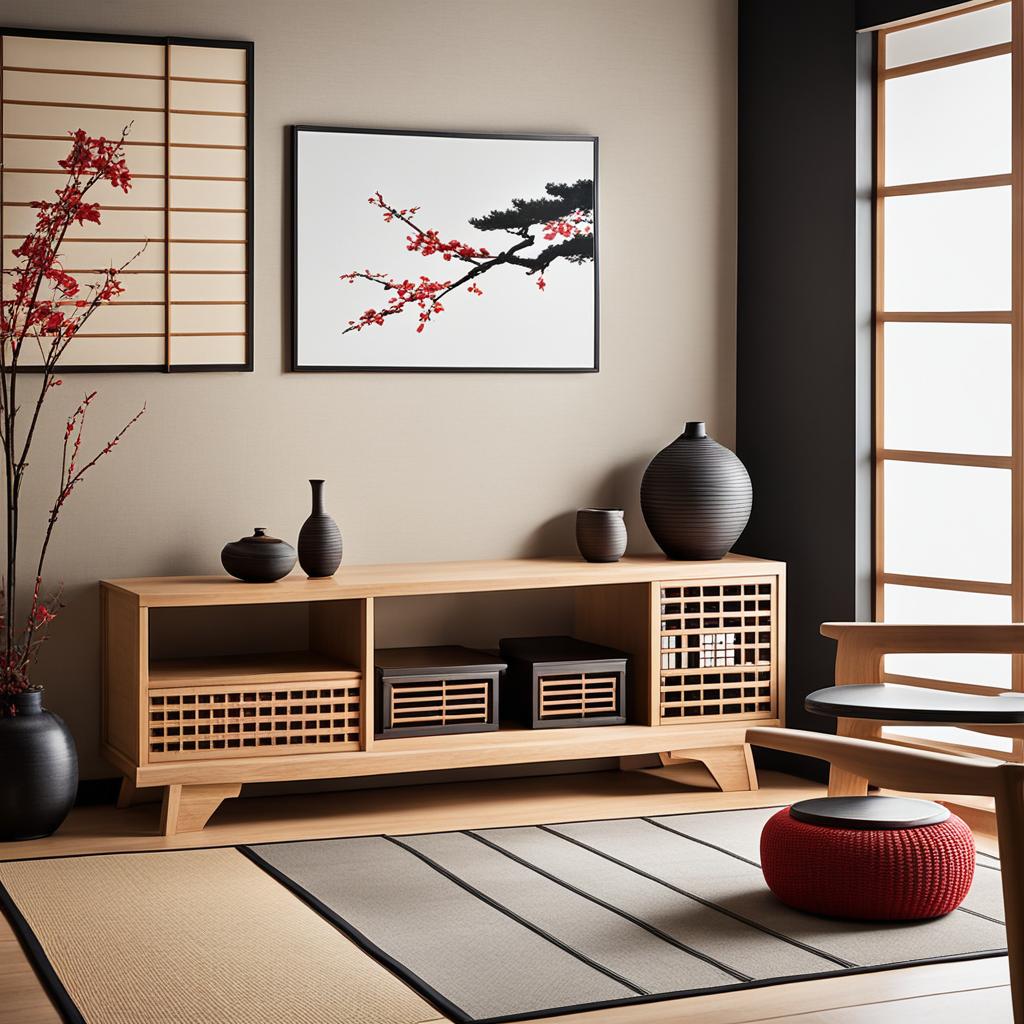
Japanese living room furniture combines traditional and modern styles. These styles aim for comfort, simplicity, and a bond with nature. They show the beauty of both old and new designs.
Traditional vs. Modern Japanese Furniture
Traditional furniture includes futons, tatami mats, and low tables. These pieces are made from natural wood and are both beautiful and useful. On the other hand, modern furniture uses new styles and sustainable materials. It blends clean lines with soft textures, making it perfect for any room.
Key Characteristics of Japanese Furniture
Traditional and modern Japanese furniture share some key traits:
- Clean Lines: They have simple designs that don’t have much clutter.
- Natural Materials: They use wood, bamboo, and other natural stuff.
- Functional Elegance: They look good and are also useful.
- Connection to Nature: They make you feel at one with nature.
This focus on making things by hand and using quality materials makes both old and new furniture welcoming and peaceful.
| Characteristic | Traditional Japanese Furniture | Modern Japanese Furniture |
|---|---|---|
| Design Philosophy | Focuses on simplicity and usefulness | Mixes new looks with old ideas |
| Materials Used | Uses natural wood, paper, and straw | Chooses sustainable stuff like recycled wood and metal |
| Furniture Pieces | Includes futons, low tables, and tatami mats | Has sofa beds, modular furniture, and pieces that do many things |
Zen Living Room Inspirations
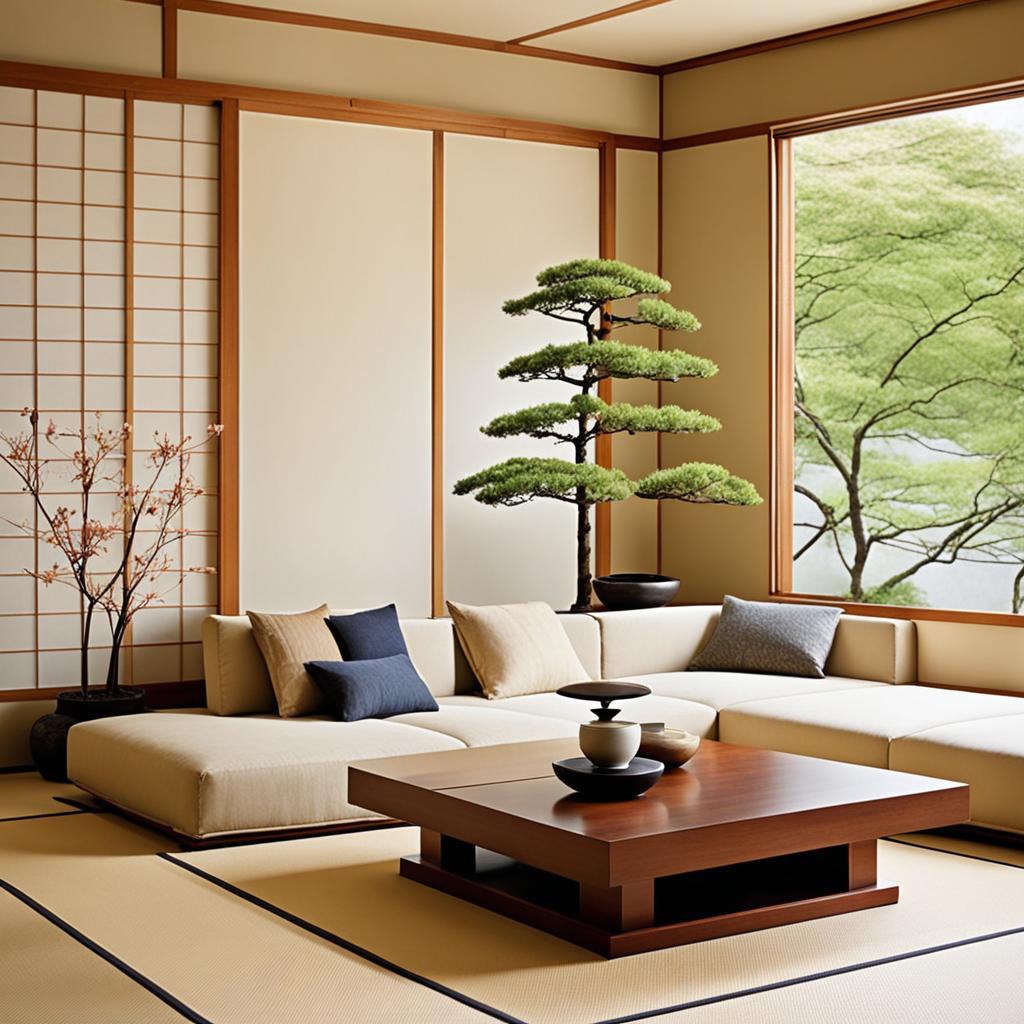
Creating a zen living room means focusing on simplicity and serenity. It’s all about minimalism, clean lines, and a calm feel. This makes the room peaceful and welcoming. Adding certain elements can really boost this calmness.
Elements of Zen Aesthetics
Key parts of zen aesthetics include:
- Natural light: Keep windows open to let sunlight fill the room.
- Open space: Avoid clutter to make the room feel bigger.
- Neutral color palettes: Soft, earthy colors help create a calm mood.
Incorporating Nature into Your Living Space
To make a zen living room even better, bring in nature. Here’s how:
- Adding indoor plants: Plants clean the air and add life to the room.
- Utilizing natural materials: Furniture from bamboo, wood, or stone connects you to nature.
- Creating outdoor views: Place furniture to look at natural scenes or gardens.
Low Furniture: A Distinctive Feature
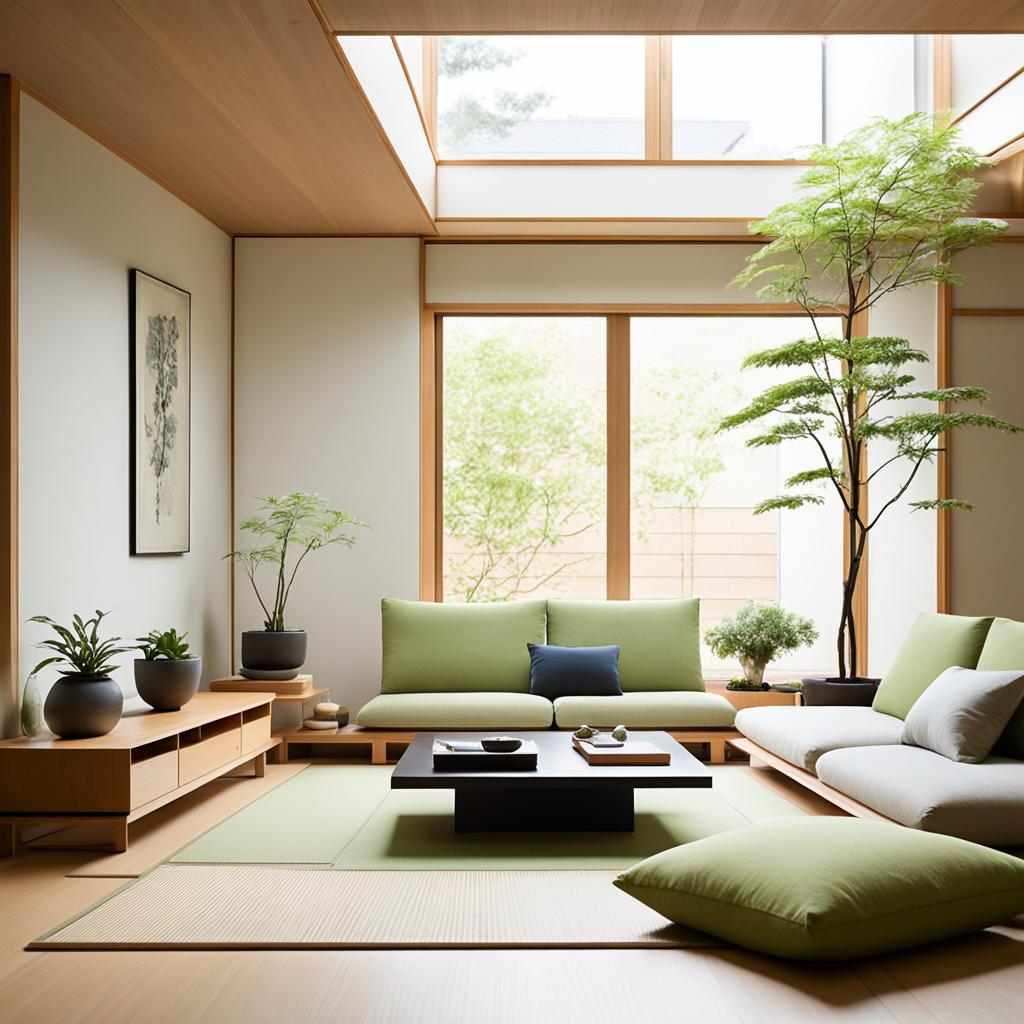
Low furniture is key in Japanese design. It changes how we set up our living areas and the feel of the space. This style focuses on space optimization, making rooms feel bigger and more welcoming. It helps create spaces that are perfect for chilling out and spending time with others.
Benefits of Low Furniture for Space Optimization
Using low furniture in your living area has many benefits:
- Open Feel: It keeps the space flowing, making it look less crowded and bigger.
- Casual Lifestyle: It’s great for hanging out and building family bonds.
- Versatile Arrangement: You can easily change the layout as your needs change.
Popular Low Furniture Pieces in Japanese Design
Here are some top furniture pieces that show off the beauty of low furniture in Japanese design:
- Tatami Mats: These mats serve as both floor and seating, adding comfort and keeping tradition alive.
- Low Coffee Tables: Ideal for a laid-back vibe, these tables fit well without taking up too much room.
- Platform Seating: This minimalist seating encourages a casual and inviting atmosphere.
Tatami Mat Furniture: Comfort and Style
Tatami mats are key to traditional Japanese homes, offering more than just flooring. Made from rice straw, they are known for their comfort and deep cultural roots. Their history shows how important they are in Japanese life, fitting well in many rooms. Adding tatami mat furniture to your home boosts both style and mood.
History and Cultural Significance of Tatami Mats
The story of tatami goes back to the Heian period, symbolizing luxury and high status. What started as luxury for the elite is now found in many Japanese homes. Tatami mats are linked to traditions like tea ceremonies and family get-togethers, promoting a sense of community and comfort. Using tatami in your home connects you to these traditions and adds a sense of calm to modern spaces.
Combining Tatami with Modern Decor
Mixing tatami mat furniture with modern decor creates a unique look. Tatami can be used for seating or sleeping, keeping the room elegant. Adding bright touches like flowers can make the space lively and colorful. For ideas on combining tatami with flowers, see fresh floral inspiration. This mix creates a space that honors tradition and looks great today.
Shoji Screen Furniture for Privacy and Elegance
Shoji screen furniture is a key part of Japanese design. It’s known for making rooms look better and work better. These screens use wood and rice paper to let soft light through while keeping things private.
This mix of light and shadow makes rooms feel peaceful. It’s a big part of what makes a room calm.
How Shoji Screens Transform a Space
Shoji screens are not just pretty; they’re also useful as room dividers. They help make a big room feel like several smaller ones. This makes a space feel balanced and tidy.
They fit well with modern design, helping to keep things simple and stylish. This makes homes feel bigger and more organized. It also makes them feel more relaxing.
Integrating Shoji Screens in Modern Homes
Adding shoji screens to modern homes is easy and rewarding. They work well in many places, like living rooms and home offices. By choosing shoji screens, you’re not just improving your decor. You’re also embracing a minimalist style.
These screens fit well with other furniture and help make a room peaceful. Adding beautiful flowers can make the space even more calming. You can learn more about this here.
Wabi-Sabi Design Philosophy
The wabi-sabi design philosophy values imperfection and authenticity deeply. It comes from Japanese aesthetics. It sees beauty in natural materials and the unique marks of age and use.
This view asks us to see the beauty in life’s fleeting moments. It says true beauty is often found in the flaws and unfinished parts of things. By focusing on authenticity, we connect more with our surroundings and our past.
Embracing Imperfection and Authenticity
To follow wabi-sabi design, we should value imperfection. Handmade items, like pottery or furniture, show their unique stories. Worn textiles and weathered wood become precious because they tell stories of life.
Adding these items to our homes makes them feel real and personal. It helps us grow and connect with our imperfections.
Practical Tips for Incorporating Wabi-Sabi
For those wanting to bring wabi-sabi into their homes, choose materials like clay, stone, and wood. These materials get better with age. Using empty spaces in your décor adds calm by keeping things simple.
Value the stories behind the items you collect, whether they are rustic or elegant. Each piece can bring back memories and feelings. By doing this, you make a space that honors imperfection and your unique story.
